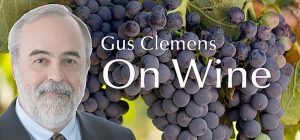Every bottle of wine is a history. Usually a wine is an expression of a single year. It tells the story of that year’s climate, the people working the vineyard, the people making the wine. Plus, there is the backstory of the grapes, the vineyard, the winery, the people.
Many wineries and winemakers have compelling histories. In the Old World, it is not unusual for winemaking family sagas to stretch back hundreds of years. Vineyards they work also date back centuries. To write about wine is to write histories of the makers, the vineyards, the grapes. The wine may be delicious, the backstory even more so. Often inspiring and uplifting.
Take Champagne. Women have leadership roles in winemaking and winery management today. Something new? Not in Champagne, where women have played critical roles in the top Champagne houses for more than two centuries. Barbe-Nicole Clicquot Ponsardin—Veuve Clicquot—took over the winery in 1805 when her husband died. She was 27 years old. She turned the winery into a major international player. She invented the riddling technique still used by sparkling makers today.
Louise Pommery took control of her Champagne house upon her husband’s death in 1858. She turned Pommery into a sparkling powerhouse and was instrumental in making brut the world’s most popular style of Champagne.
Camille Olry-Roederer took over her house after her husband’s death in 1932. Over the next 42 years she turned the company into a bubbly superstar.
Elisabeth Law de Lauriston-Boubers married Jacques Bollinger in 1923. They vigorously promoted their Champagne house until his death in 1941. She saw the house through World War II and decades beyond. She so charmed Ian Fleming that his character James Bond would only drink Bollinger.
The Gallo brothers, Ernest and Julio, sons of Italian immigrants, founded a small winery in 1933. Today, E&J Gallo is still family owned and the world’s largest winery. It produces one-third of the wine made in the U.S. and more than 3% of all the wine made in the world.
You would be hard-pressed to name a more accomplished father and daughter duo than Dr. Nicolás Catena Zapata and Dr. Laura Catena. Nicolás was a professor of economics at UC-Berkeley and ran the family winery in Argentina. Laura became an emergency room physician with degrees from Harvard and Stanford. Until recently, she practiced emergency medicine in California while heading one of the largest Argentine wine brands in the world.
Great histories. Great stories. Great wine.
Last round: A will is a dead giveaway. Wine time.

